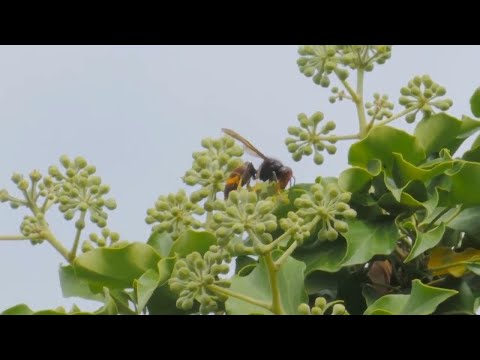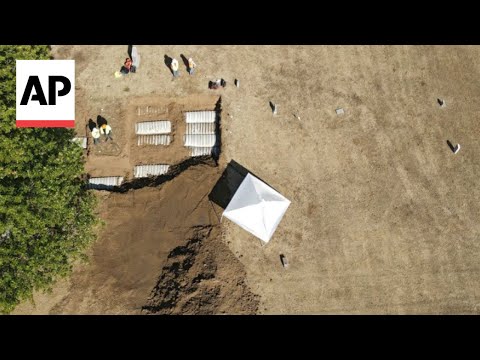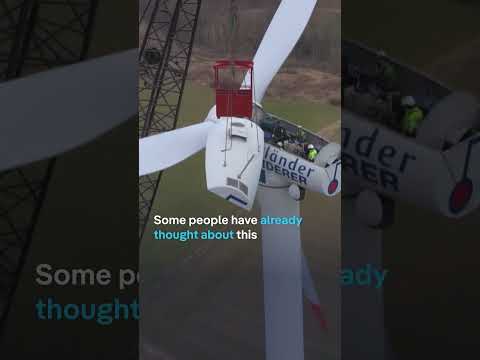(8 Oct 2024)
SWITZERLAND ASIAN HORNETS
SOURCE: ASSOCIATED PRESS
RESTRICTION SUMMARY:
LENGTH: 6:36
ASSOCIATED PRESS
Grand-Saconnex, Switzerland – 30 September 2024
1. Various close ups of a European hornet (two shots)
2. Various closes ups of an Asian hornet (two shots)
3. Various close ups of bees hovering around their hives
4. Bees coming in and out of their hive with pollen
5. Wide of Maxime Camaleonte
6. SOUNDBITE (French) Maxime Camaleonte, Head of parks Saconnex and volunteer with Pollinea-Action:
“There are permanent attacks on the hives and therefore the bees are stressed. We risk having problems getting through winter because stressed bees mean less stock (food).”
7. Camaleonte releasing an Asian hornet from a container
8. Various of Julie Manzinalli
9. SOUNDBITE (French) Julie Manzinalli, biologist, Geneva Basin Invertebrate Center:
“The first big problem is the impact on beekeeping because (the Asian hornet) attacks bees and it has a specific way of hovering which allows it to be stationary in front of the hive and bees more easily. This stresses the bees and therefore they produce less honey and the hive suffers significant losses. The second problem is the attacks; more and more people are getting stung.”
10. Various of Asian hornets captured in jars
11. SOUNDBITE (French) Julie Manzinalli, biologist, Geneva Basin Invertebrate Center: (showing transmitter)
“So we are going to equip this hornet with a low weight transmitter, it weighs 180mg and this transmitter will emit signals which we will be able to follow using a receiver and this antenna.”
12. Close of a captured Asian hornet before the device is installed
13. Various of Manzinalli installing the device on the Asian hornet
14. Hornet flying away with transmitter device attached
15. Various of Manzinalli and Pollinea-Action members tracking down the hornets’ signal
16. Various of a tree top where the Asian hornet nest is visible
18. Various of the fire department marking the tree with a banner
19. SOUNDBITE (French) Julie Manzinalli, biologist, Geneva Basin Invertebrate Center
“We will not be able to eradicate this species, the main objective is to try to reduce the predation pressure on bee hives and to reduce the number of dangerous nests for the population.”
ASSOCIATED PRESS
Bernex, Switzerland – 29 September 2024
20. Wide of a man brushing leaves of a hedge in a residential area
21. Nicolas Brand preparing his gear with residents who called him out to deal with a hornet nest
22. Brand adjusting his hornet nest-destroyer pole at the foot of a tree
23. Brand extending the pole up the tree
24. SOUNDBITE (French) Nicolas Brand, fireman and hornet nest destroyer at Pollinea-Action:
“We need to raise awareness among the public so that they can identify nests. For the moment we have a team of around ten specialised people who find a lot of nest with triangulation methods or telemetry but we also have calls from individuals.”
25. Close of the tip of the pole entering the Asian hornet’s nest, hornets get angry
26. Wide of nest in the tree and pole inside the nest
27. Brand and the residents talking
28. SOUNDBITE (French) David Saillet, local resident
“It is a pest that is not originally from here and we do have also bee hives. So we are happy because it’s also one less danger for our children.”
29. Another Asian hornet nest on a tree top being sprayed with pesticide, a cloud of smoke is seen coming out of the nest
32. Brand moving away from the tree while debris falls down after spraying
ASSOCIATED PRESS
Grand-Saconnex, Switzerland – 29 September 2024
Find out more about AP Archive: http://www.aparchive.com/HowWeWork
Twitter: https://twitter.com/AP_Archive
Facebook: https://www.facebook.com/APArchives
Instagram: https://www.instagram.com/APNews/
You can license this story through AP Archive: http://www.aparchive.com/metadata/youtube/4daf028f228145c7b07522a022b49c04
Author: AP Archive
Go to Source
News post in October 13, 2024, 3:04 am.
Visit Our Sponsor’s:
News Post In – News





